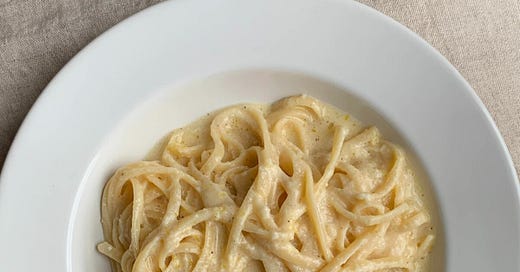Fennel & Grapefruit Salad, A Ribollita-ish Dish, and Luscious Lemon Linguine
bright recipes for dark days + produce to look for in mid-winter
You were warned that this is a monthly-ish newsletter... so hopefully it's no big surprise that it's been (yikes!) four months already since the last one.
If you can remember the last newsletter, or if you follow me on Instagram, you'll know that I went back to Canada in October — I hadn't been home in nearly three years due to the pandemic, so I thoroug…
Keep reading with a 7-day free trial
Subscribe to good food at home to keep reading this post and get 7 days of free access to the full post archives.




